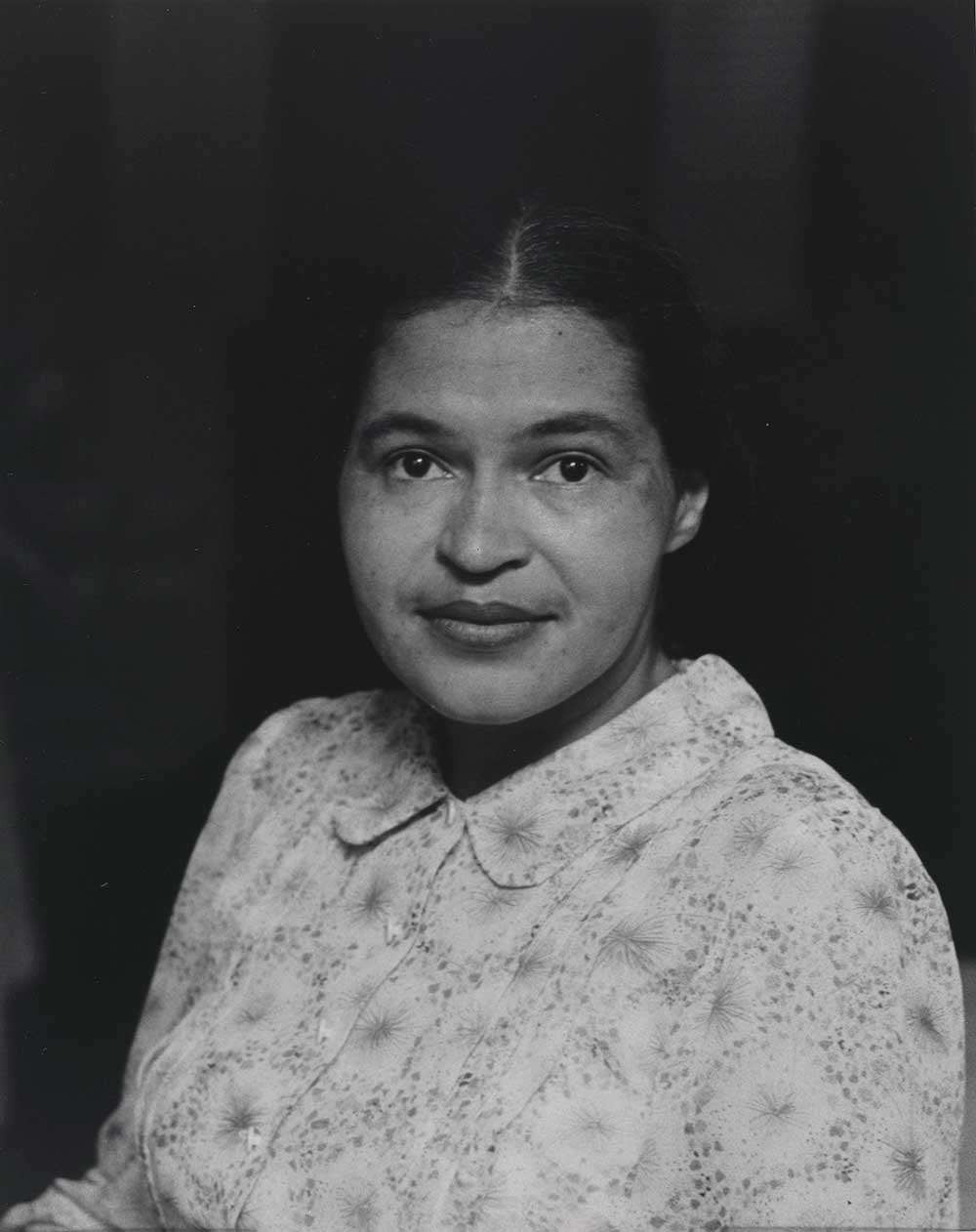Rosa Parks: Tired of Giving In

This post originally appeared Dec. 1, 2016
Public transportation, in all its various forms, brings people into an enclosed and shared space. Having all paid a fee, we board with the expectation that most seats, unless reserved for those with disabilities, are open to all. However, this was not always the case throughout parts of the United States, where public transportation and other public spaces remained racially segregated into the middle of the twentieth century. In Montgomery, Alabama, African American passengers were legally required to sit further back on the bus, in the “colored” section. Moreover, they had to yield those seats to white riders if the “white” section at the front of the bus filled up. Public transportation was therefore not entirely “public,” but rather a divided or even forbidden space for African Americans.
On December 1, 1955, Rosa Parks, an African American woman, refused to give up her bus seat to a white male passenger. While on similar occasions drivers had requested that she get off the bus, on this ride, the driver decided to call the police. Parks remained in that seat until the police arrived and arrested her. This arrest set in motion a 381-day boycott of the Montgomery Bus System and transformed Martin Luther King Jr., then a local pastor, into a national leader in the struggle for civil rights.
Parks was not the first to refuse to give up her seat, nor the first to be arrested. Skilled in grassroots organizing, she was aware of the potential consequences of her act of civil disobedience. In addition to being a seamstress, she was also a respected community activist. Not only was she a member of the NAACP (National Association for the Advancement of Colored People), but she had also served as the local chapter’s secretary for many years and had been working on the desegregation of the city’s schools. In the summer of 1955 she had participated in a workshop on community activism at the Highlander Folk School (now the Highlander Research and Education Center), where she was photographed by Ida Berman [NPG.99.57].
As Parks later explained, “The only tired I was, was tired of giving in.” Her unwillingness to relinquish that seat triggered in thousands of others the shared exhaustion of “giving in” and all of its contingent humiliations and sorrows. Her example empowered them to join the well-organized Montgomery Bus Boycott, which started on December 5, 1955, leading many to walk miles in inclement weather, or, worse, to be harassed on their way to work, school, or home. Parks later poured her energies into the organization, logistics, and promotion of the boycott, which eventually led to the U.S. Supreme Court decision on November 13, 1956, deeming Alabama’s segregated bus laws unconstitutional.
Parks’s courage on December 1, 1955—and throughout her life—was, and continues to be, pivotal in the preservation of civil liberties.